The Lego Has Landed! NASA Apollo Saturn V Moon Landing Set in Pictures
The Lego Has Landed

NASA's iconic Saturn V moon rocket and Apollo lunar landings get the Lego treatment in the NASA Apollo Saturn V Lego set. The epic set debuts in June 2017 for $119.99 and has 1,969 (to celebrate the 1st lunar landing by Apollo 11 on July 20, 1969)!
This view: No Apollo Lego set is complete without a lunar lander, and that's true with the NASA Apollo Saturn V. Here you can recreate Neil Armstrong's "one giant leap," plant a flag and more using some new microfigures from Lego. The set was designed by Lego fans Felix Stiessen and Valerie Roche, and was selected for release under the company's Lego Ideas program.
The Might Saturn V

NASA's Saturn V rocket stood 363 feet tall. Lego's version is a 1:110 scale model. It is over 39 inches (100 centimeters) tall -
An Apollo Mission in Stages

The Lego Saturn V rocket separates into its main stages, as seen here. It also comes with an Apollo capsule (shown after an ocean splashdown) and a lunar lander.
Standing Tall
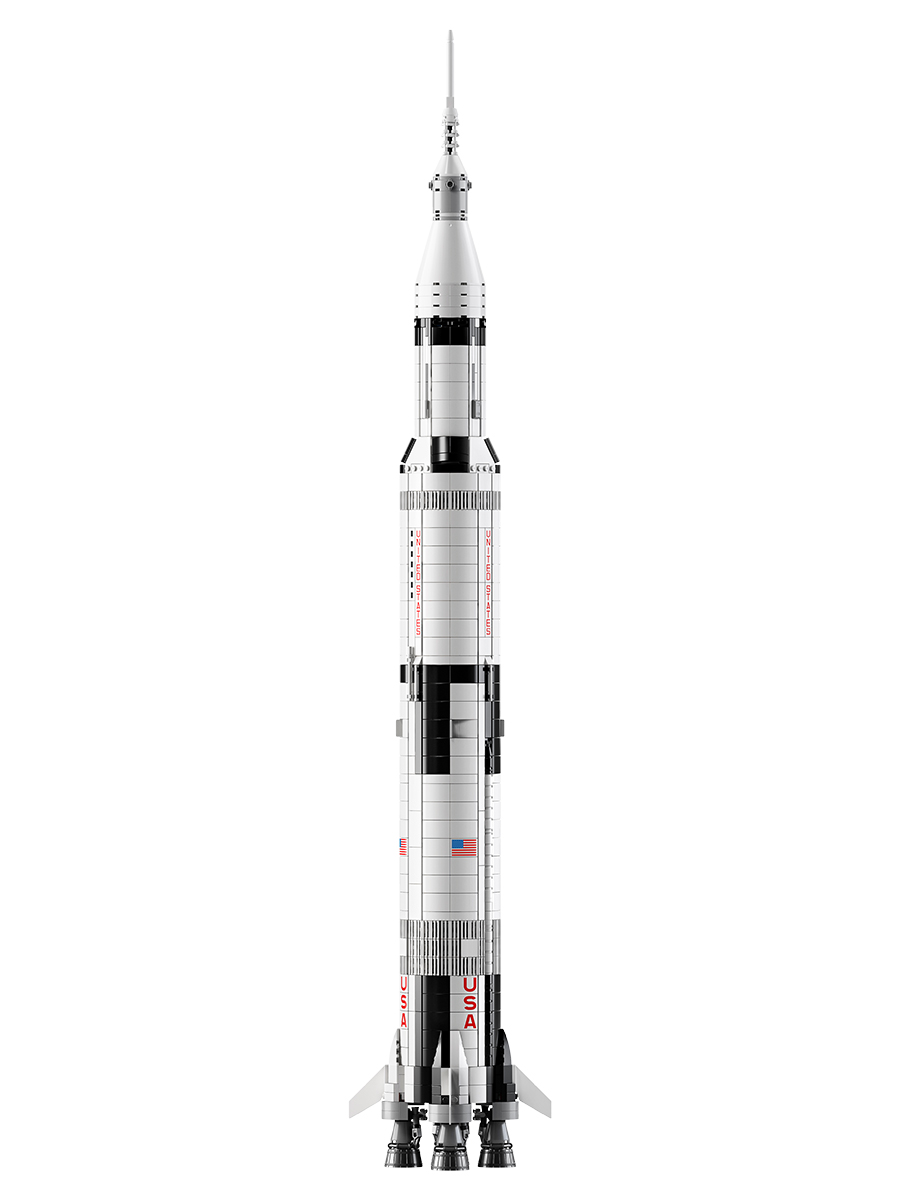
Here's a look at the Lego Saturn V in all its glory. The extreme detail is sure to delight both Lego and space fans. We can just imagine the launchpad MOCs (my own creations) and more that this set will inspire.
Lego Stage Separation
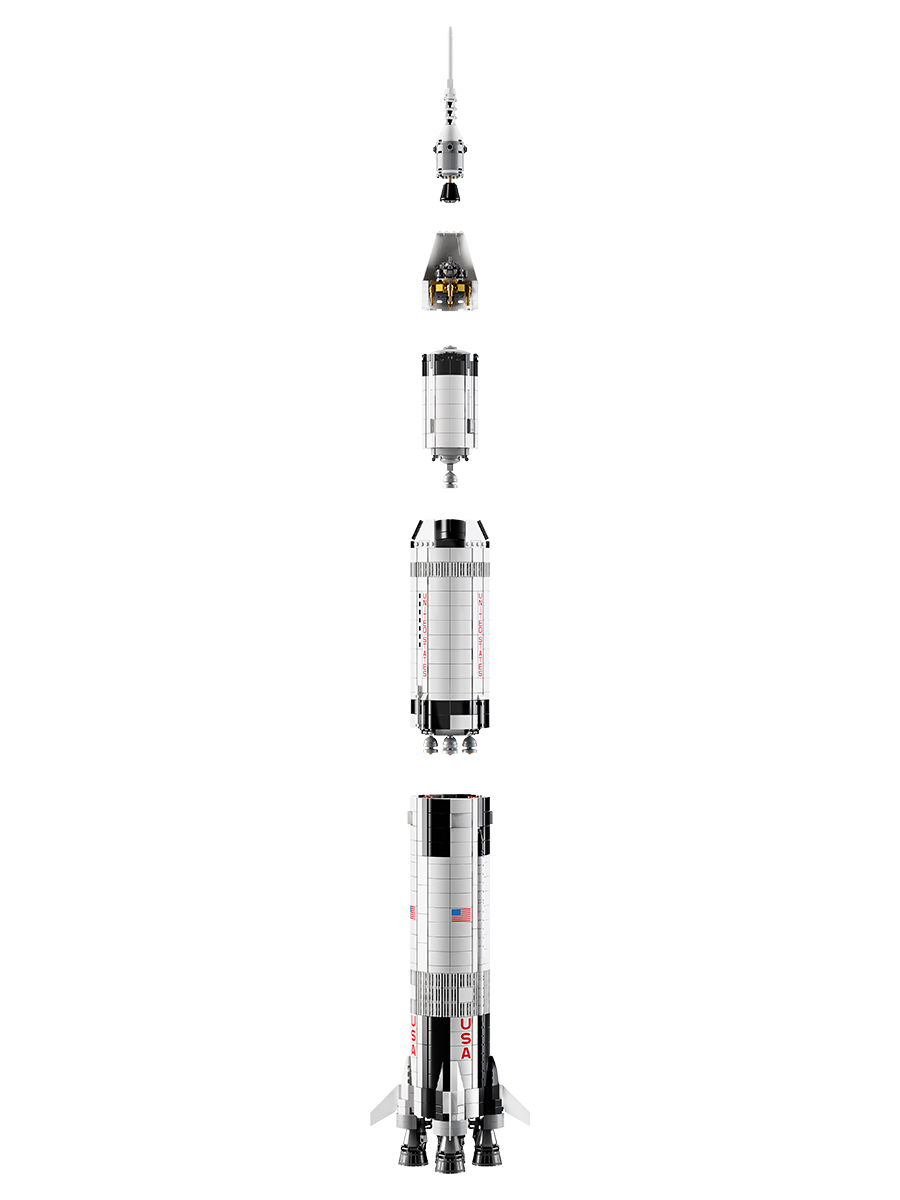
This view shows how the different Saturn V stages fit together in the Lego NASA Apollo Saturn V set. Look close and you'll see the Apollo lunar lander inside its protective fairing beneath the command module above!
Build Your Own Apollo Mission
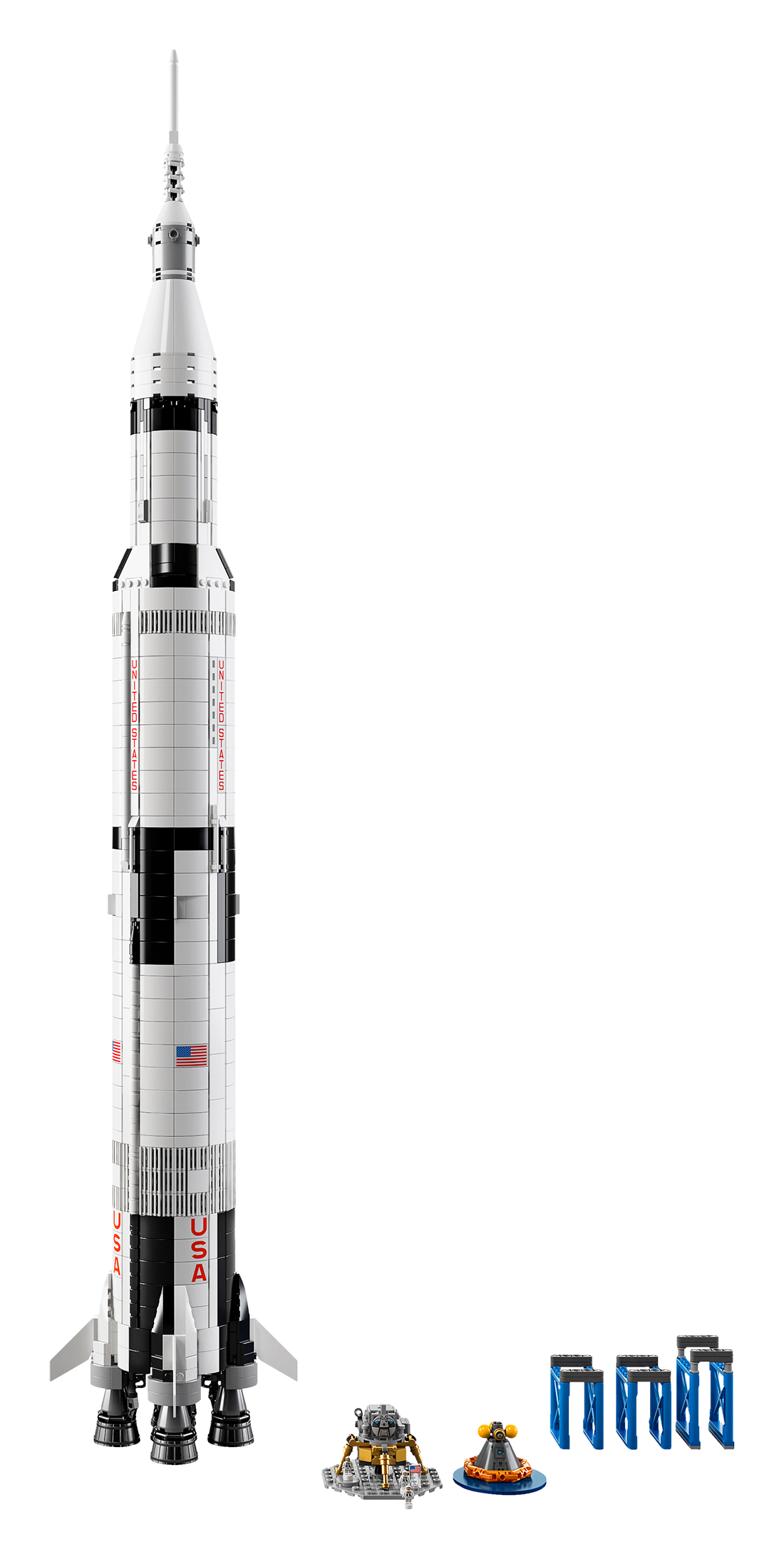
Here's what you'll be able to build with the Lego NASA Apollo Saturn V. The set includes the might Saturn V rocket (left), as well as an Apollo lunar lander with three astronaut microfigures (a new piece for 2017), the command module capsule after splashdown and three stands for horizontal display. There's also an booklet that includes instructions and history on the Apollo and Saturn V programs.
Get the Space.com Newsletter
Breaking space news, the latest updates on rocket launches, skywatching events and more!
On a Lego Moon

This closeup of the Lego NASA Apollo Saturn V lunar lander shows some tantalizing gold pieces, as well as printing (they don't look like stickers to us) to simulate the windows on the lander, as well as the American flag and Apollo spacesuits.
Lego Splashdown!

You have to give it to Lego, we wouldn't have thought to use hinge parts to serve as inflatable balloons around the bottom of this Apollo capsule. What looks like more detailed printing rounds out the cone piece to give it that capsule feel.
A Box to Remember
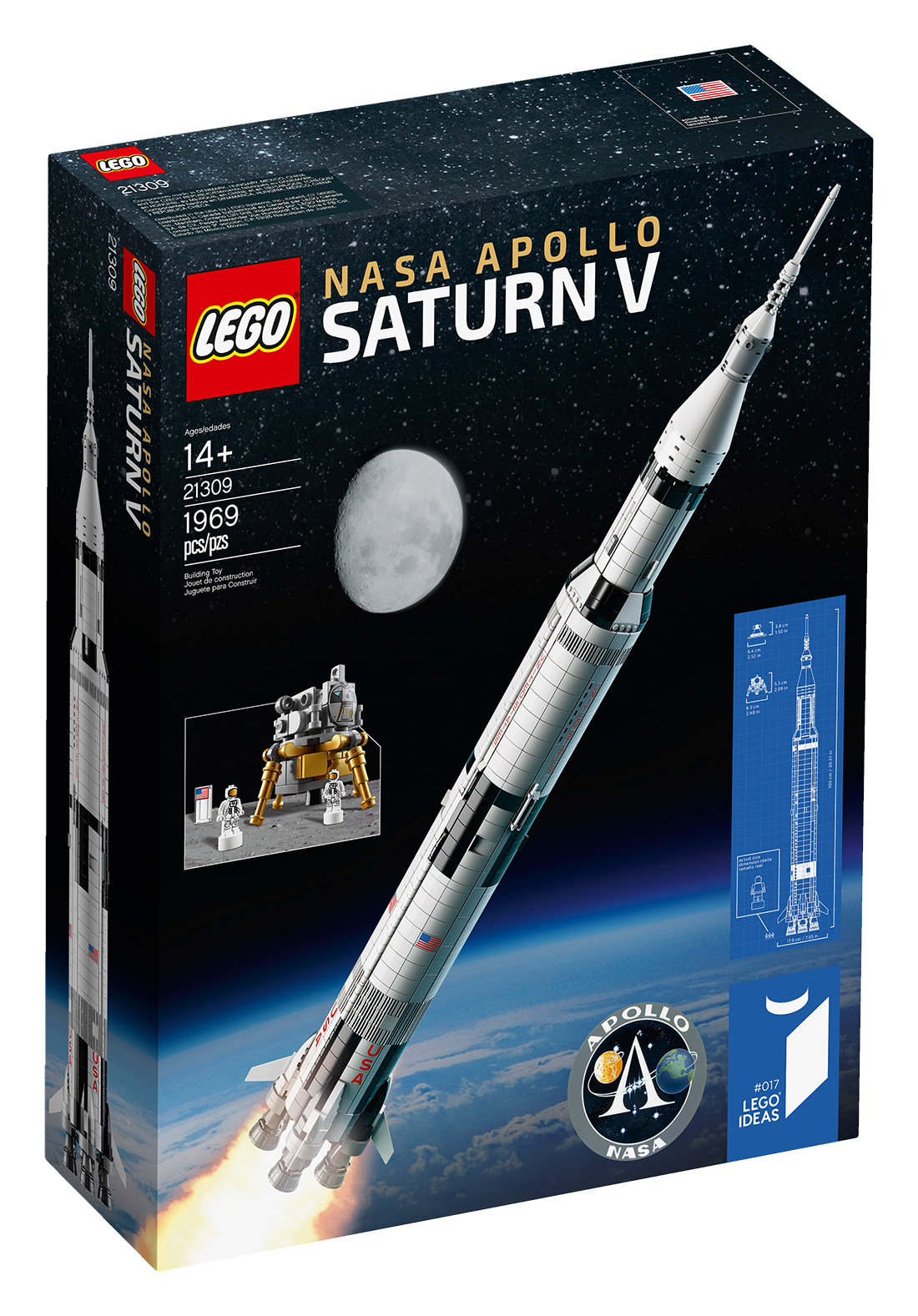
Here's a look at the box front for the Lego NASA Apollo Saturn V set.
An Apollo Mission in Pictures
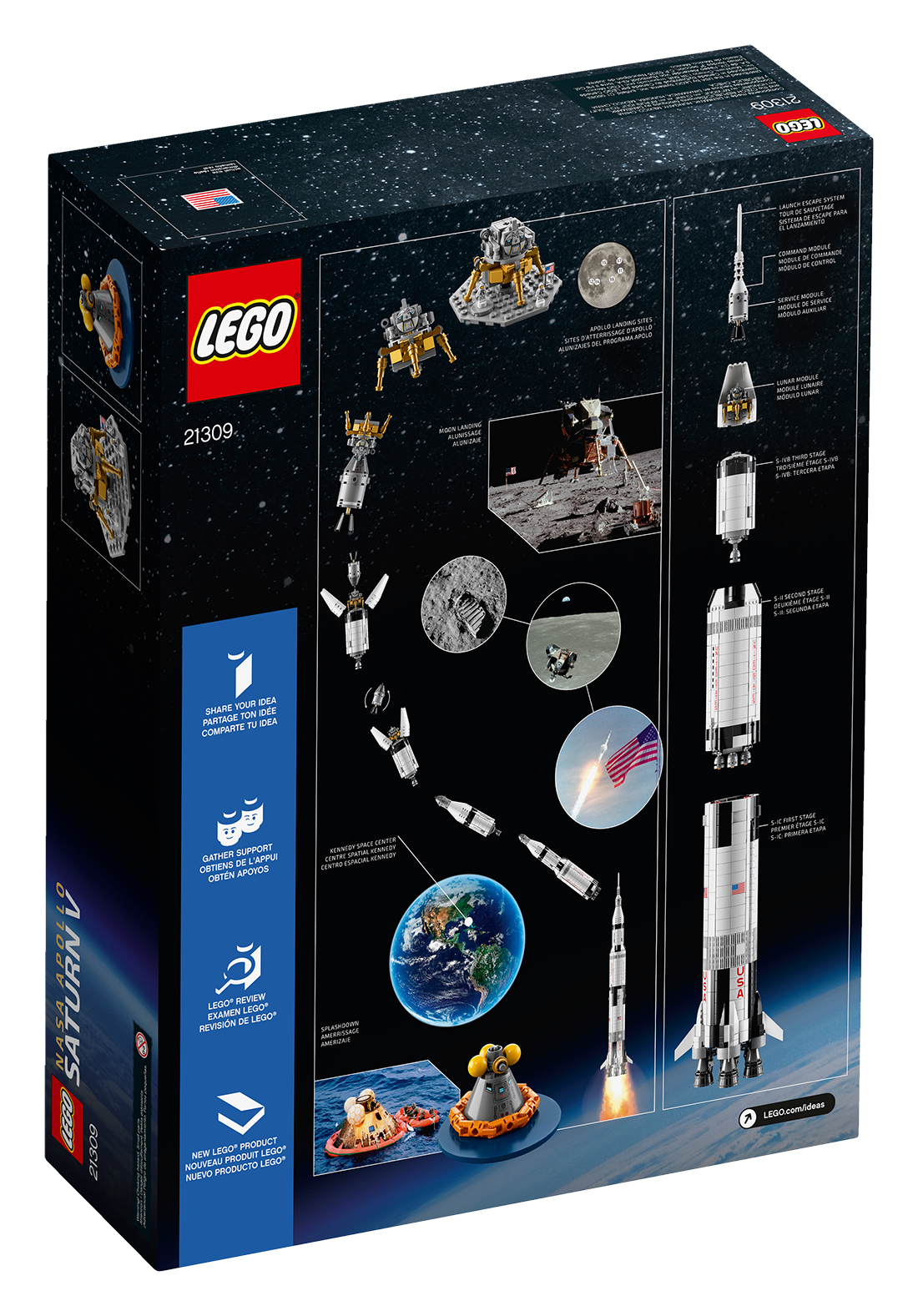
The back of the box includes a detailed look at the stages of NASA's Apollo moon missions. Lego advises that the NASA Apollo Saturn V set is for builders age 14 and up. But there is a ton of detail and fun for space and Lego fans of all ages to enjoy with this set! Read our full story on this epic set's reveal.
So, do you plan to buy Lego's NASA Apollo Saturn V set? If so, let us know in the comments below!
Join our Space Forums to keep talking space on the latest missions, night sky and more! And if you have a news tip, correction or comment, let us know at: community@space.com.

Tariq is the Editor-in-Chief of Space.com and joined the team in 2001, first as an intern and staff writer, and later as an editor. He covers human spaceflight, exploration and space science, as well as skywatching and entertainment. He became Space.com's Managing Editor in 2009 and Editor-in-Chief in 2019. Before joining Space.com, Tariq was a staff reporter for The Los Angeles Times covering education and city beats in La Habra, Fullerton and Huntington Beach. In October 2022, Tariq received the Harry Kolcum Award for excellence in space reporting from the National Space Club Florida Committee. He is also an Eagle Scout (yes, he has the Space Exploration merit badge) and went to Space Camp four times as a kid and a fifth time as an adult. He has journalism degrees from the University of Southern California and New York University. You can find Tariq at Space.com and as the co-host to the This Week In Space podcast with space historian Rod Pyle on the TWiT network. To see his latest project, you can follow Tariq on Twitter @tariqjmalik.









